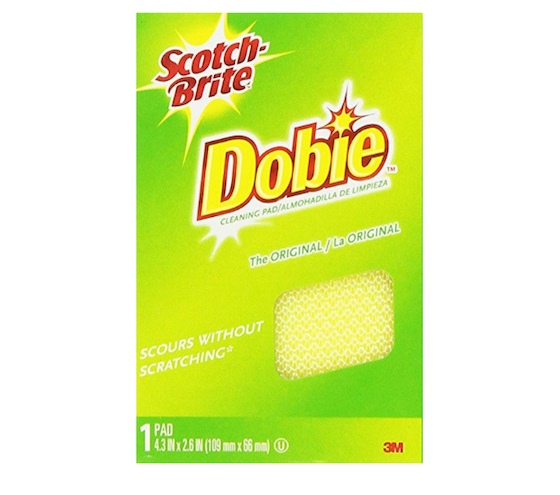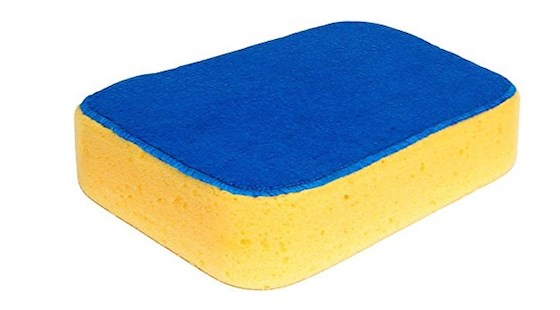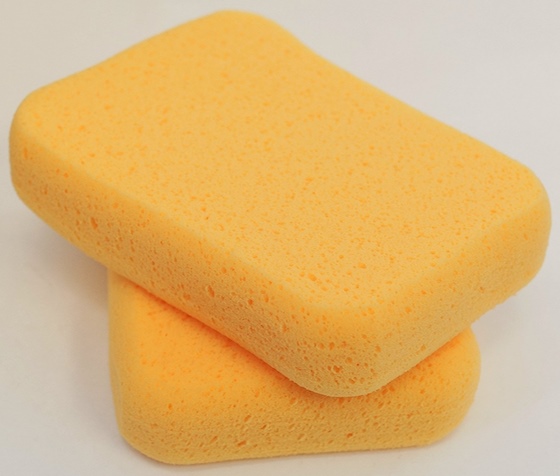Excess Grout Removal
Grout Removal TIPS
- Wood sticks don't scratch tile
- Remove grout ASAP after mistake
- Add water to lubricate
- Secret sugar method - See Below!
- CLICK HERE to Get Tim's FREE & FUNNY Newsletter!
DEAR TIM: I was grouting ceramic tile when I had to leave the house for an emergency. When I could finally get back to work the next day, the grout was hard as a rock. I have extra tile, should I just remove the mess I have now and start over? Is there a way to remove the hardened grout without harming the tile? Dan A., Orlando, FL
DEAR DAN: First, I hope all of those associated with the emergency situation are okay and doing well. As for your ceramic tile, I would not just yet pronounce it DOA (dead on arrival).
Depending upon certain factors, including but not limited to, amount of excess grout, the amount of time the grout has been left to harden, the surface texture of the tile, and the amount of patience you have, you may be able to salvage the tile job. It most definitely is worth a try.
CLICK HERE to get FREE & FAST BIDS from local tile repair contractors.

These tools will get up most of the grout paste left behind. The wood stick with sharp edges will prevent scratches as you try to pop off large pieces of grout. Vacuum up the dust as you work, so the grout grit does not scratch the glazed tile.
Use Right Tools
The best tool to use is an oak wood stick with sharp edges will prevent scratches as you try to pop off large pieces of grout.
The easiest place to get oak is a pallet slat. Visit an business that uses pallets for incoming and outgoing freight and they'll have a crap pallet around.
You just have to peel off one of the top boards and then saw it so it's the shape of a paint stirring stick.
Paint Sticks Work Too
If getting oak is too much work, and it can be, then just use a paint stirring stick.
Slowly scrape the excess grout with the stick edge. Cut into the grout with the corner of the stick.
Do NOT attack the grout like a bulldozer cuts into a hill of dirt. The stick will ride up over the grout.
IMPORTANT TIP: Brush away or vacuum up the grout grit and dust as you work. If you don't, the grout grit will scratch the glazed tile.
Floor grout contains fine pieces of silica sand and it's extremely abrasive. The sand will scratch tile fast and it's just about impossible to repair the tiny scratches.
48 Hours
The primary ingredient in many ceramic tile grouts is Portland cement. It takes days and often weeks for ceramic tile grout to reach full strength.
At this point in time, you're working against the clock. Every hour after the grout was installed, it gets much harder to remove it.
I've found that if you start to remove excess grout within 48 hours after it was installed, it's not too hard.
The longer you hesitate to remove the grout, the harder it becomes to remove. If, by chance, the grout was an epoxy grout, you're toast. It's virtually impossible to remove excess epoxy grout from tile surfaces without damaging the tile.
Step-By-Step Tips
The grout removal process requires just a few simple tools. You need some small pieces of wood that have very square-cut edges and several brand new nylon scouring pads.

This is the BEST grout removal tool I've ever used in conjunction with a wood stick. These nylon pads do a fantastic job. CLICK THE IMAGE ABOVE NOW TO ORDER THEM.
The first thing to do is to work in a small area to see how successful the grout removal techniques will be. If you have rapid success and can get a few tiles clean within a few minutes, that's a very good sign.
No Metal Tools
Use the wood sticks to remove large clumps and layers of grout. Do NOT use metal scraping tools, putty knives, etc. The metal will permanently damage the glazed surface of the tile.
Don't allow contractors to use metal tools.
CLICK HERE to get FREE & FAST BIDS from local tile repair contractors.
Oak is Best - Soft Woods Dull
I prefer to use pieces of oak that are 1/4 to 3/8 of an inch thick, one-inch wide and perhaps six inches long. The oak hardwood holds its square-cut edge longer than a softwood like most paint stirring sticks.
Use a power saw to make sure all of the edges are square cut instead of slightly rounded. The crisp square edge aggressively cuts through the grout down to the surface of the ceramic tile.
Add Water
Before you begin to attack the grout-covered tile with the stick, pour a little water on it. The water acts as a lubricant and helps to prevent micro-scratches on the glazed tile surface. It should not require excessive pressure to get immediate results.
The trick to removing large grout deposits is to just cut into the grout with a corner of the grout stick. Don't try to push the entire square face of the oak stick into a large clump of grout.
Once the heavy deposits of grout are removed using the oak stick, rinse off all of the grout particles and grit from the surface of the tile.
New MicroFiber Sponge
New tools and products hit the market all the time. Farther down below you'll see traditional grout sponges that work really well for this job.
But right here is a newer sponge that combines a microfiber surface on one side that really helps you get rid of the DRIED grout haze on ceramic tile. CLICK HERE NOW to order one of these sponges.

Here's a fantastic newer sponge that will do a great job of cleaning dried grout haze. CLICK THE IMAGE NOW TO BUY ONE.
Scrub Away
Add more fresh water to the surface of the tile. Get the nylon scouring pad wet as well. Begin to scour the tile surface with the pad adding plenty of fresh water as you scrub. You should see dramatic results within seconds.
Check for Scratches!
You can test to see if all of the grout paste has been removed by doing a final rinse on the tile(s) you just worked on. Use a soft cotton cloth to dry the tile. You can also dry it quickly with a regular fan or a hair dryer.
Remove Haze
Wet tile can trick you. It often looks perfect but frequently after it dries you will see a slight grout haze upon it. Hold a piece of spare tile next to the clean and dry tile to see if it has been restored to its original condition.
Add New Grout
The biggest challenge of the job will be restoring the grout lines between the tiles. When tile grout is wet, it is very easy to make the grout lines uniform using a special grout sponge that has rounded edges.

These are wonderful grout sponges with rounded edges. I've used these for decades with amazing results. CLICK THE PHOTO IMAGE NOW TO ORDER THESE SPONGES.
Carving Hard Grout
The sponge tools the grout line smooth. But now, the grout in between the tiles is anything but uniform. Use coarse sandpaper to slightly round off a corner of one of the oak sticks so that it resembles a woodworker's chisel.
As you push and pull the stick back and forth along the grout lines, the rounded corner will cut a profile similar to what the sponge would have created. Once again, introduce some water to the grout to act as a lubricant.
Do not give up if you do not see immediate results. Try to be patient with the wood stick as it may be far easier to dress the grout this way than to remove the grout and start over. If you do decide to re-grout, try to make sure you do when you will not be called away from the house!
Secret Sugar Trick
I know this is going to sound crazy, but try it. Take one gallon of warm water and dissolve a cup of sugar into it. Take this sweet solution and pour it onto excess grout on a floor. If you have wall tile with too much grout, then soak paper towels in the solution and place them on the tile.
Keep the tile wet with the sugar water for at least two hours. After this dwell time is complete, use a new Dobie nylon scrub pad and scrub a small area. You should see instant results. It may take more than one application of sugar water to completely remove the grout film.
CLICK HERE to get FREE & FAST BIDS from local tile repair contractors.
Column 433
12 Responses to Excess Grout Removal